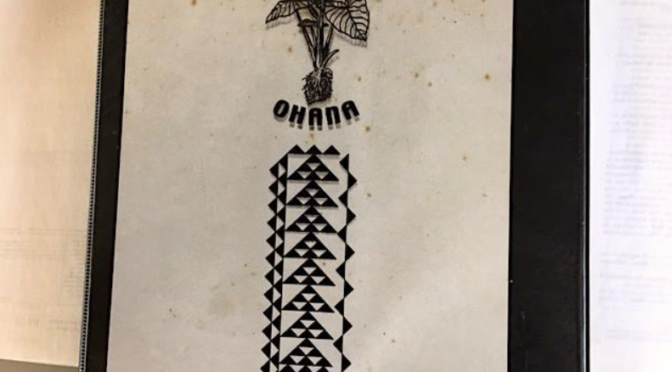My Uncle Sonny Kamahele farmed at Maku‘u after some years in the Merchant Marines. His real name was Ulrich Kamahele (I have no idea where that name came from). He had a big personality.
One day, when I was walking with a couple of my buddies on Waianuenue Avenue near where Cronies is now, I heard someone call me. It was Uncle Sonny, and he was almost all the way up the block toward Kaikodo.
It’s hard to be rugged — even when you are in the 9th grade and smoking cigarettes — when your Uncle Sonny yells “Eh, Dicky Boy.” I cringed and looked around to see if any girls had heard him. He must have been in his 30s then.
I caught up with him again after I graduated from the University of Hawai‘i and returned home to run Pop’s chicken farm. When we decided to start growing bananas, we got lots of our banana keiki from Uncle Sonny. The Paradise Park subdivision had been built and so one could drive all the way down to Maku‘u. So we saw him quite frequently.
Uncle Sonny did not have electricity, running water or a telephone, but he had a transistor radio and a 1-foot stack of U.S. News and World Reports. He always got the current copy from the Pahoa post office. Though he lived a very simple life, he’d traveled all over the world with the Merchant Marines and he knew a lot more than one would think. He could talk about a myriad of subjects. I found his stories fascinating.
I visited him often and learned a lot about farming from him. A visit to Maku‘u would take hours, with most of that time spent listening to Uncle Sonny. I learned to be a good listener. He always talked in a loud voice and he waved his arms a lot. My wife June and my sister Lei told me that they would stay arms’ length from Uncle Sonny, walking backwards or in a big circle around the yard. They were careful to stay out of range of his swinging arms, so they wouldn’t be all bruised at the end of the visit.
Everyone knew Uncle Sonny for growing the sweetest watermelons. People would come from miles around to get his watermelons. He did not have to go out to sell them; they would all sell by word-of-mouth.
We spent a lot of time talking about farming watermelons. He used a backpack poison pump. Once he showed me how he knew that the amount of sticker/spreader in the mixture was effective. Although the rate was supposed to be something like ½-teaspoon per gallon, he always double-checked the mixture by sticking a piece of California Grass into it. Due to the fine hair on the grass, water normally runs off California grass, taking the herbicide with it. If the water spread on the leaf instead of running off it, the mixture was right.
What I learned from Sonny Kamahele
The message I learned: Use the book for the first approximation, and then confirm things on the ground. The word “grounded” does come to mind.
He told me that melon flies, an enemy of watermelon, rest under a leaf at the height of the midday sun. That was why he planted a few corn plants on the outside border of his watermelon patch. Sure enough, they were there. He was in tune with the behavior of the fruit fly. He would pull out his can of Raid and give them a short burst.
The standard solution would have been to spray the whole field. Uncle Sonny’s way was much more effective and very much cheaper.
Here’s how Uncle Sonny knew his watermelons were ready: When they reached the size of golf balls, he put a wooden stake with the date on it. Then he harvested the melons after a certain number of days went by.
It was so simple and so effective. It’s what led us to place a different colored ribbon on every banana bunch we bagged in a particular week. We harvested the bananas based on elapsed time—pretty much like Uncle Sonny did.
I learned from Uncle Sonny to use the “book” for general instructions. But not to rely on it exclusively.
Uncle Sonny broke things down to their essential components. He made his life simple, and yet he was very effective. I admired him very much.
See also:
Maku‘u Stories, Part 1: My Kamahele Family in Maku’u
Maku‘u Stories, Part 2: Frank Kamahele


Dicky, Uncle Sonny got the name from a priest. Our Catholic clergy came from Europe, and Tutuman was very close to the priest as a young man, in fact our tutu did a lot around the church. Story is that tutulady’s parents did not like the Kamahele boy, they eloped with the help of the priest, Father Ulrich.
I like this sis, I too did not know where he got that German name, I thought maybe tutu had a german friend, a priest is close enough. Thx Dicky